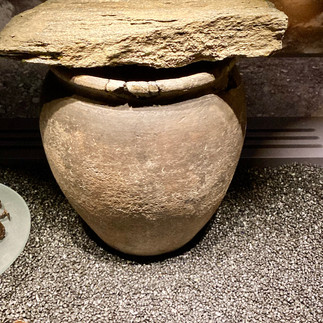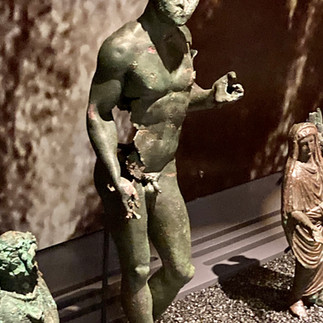Sudden chaos
- David
- Sep 6, 2023
- 2 min read
Just south of lake Geneva, in the steep foothills of the Rhone valley, sits the ugly little town of Martigny. Its claim to importance is that it sits at the cross roads of France, Switzerland and Italy—indeed, it sits at the mouth of the Great St Bernard Pass, the ancient trade route over the Alps to Italy and Rome. So important was the pass that in 57 BC the general (and later Caesar assassin) Galba moved in with the twelfth legion and occupied the original Gaulish settlement of Octodurus, incorporating the area into the Roman Alpine Province. After a bit of back and forth, the town was re-established by the emperor Claudius with the fetching name of Forum Claudii Vallensium Octodurensium, boasting the delights of an amphitheatre, temples, thermal baths, and aqueduct.
Much of the detritus and bric-a-bric of this provincial Roman town can now be found in the Fondation Gianadda—coins, loom weights, oil lamps, fine terracotta, funerary urns—and some Roman floor tiles (or perhaps bricks?), heavy and rough, one covered with prints of a dog, one of a child’s sandals, outlined with nails, and one with the deep impressions of a young pig’s trotters. What happened? What sudden chaos, what casual insouciance, caused a dog and a pig and a child to leave their prints all over a busy Roman brick yard?
In Spain it isn’t unusual to find cat or dog prints in terracotta paving (we had them in our patio, having told the builder to save the prints, obviously—not cut it off as he was about to). And what better place for a cat than a brickyard? Lots of open space, sun, things of vague interest to sniff about at, wet clay to frisk and jump in.
Roman tiles and bricks excavated at the Roman town of Cavella Atrebatum near Silchester show that a huge number of animals were apparently wandering across the drying tiles—not just the dogs and cats, chickens, young cattle, and sheep/goats you might expect in a semi-agricultural urban setting, but also things like weasels, hares, foxes and red and roe deer. Not to mention ravens, crows, tawny owls and cranes.[1] Evidence of the season (summer), but maybe of the natural environment as well—the chances of a crane wandering across your Hampshire brick yard today being zero, sadly.
[1] https://research.reading.ac.uk/silchester/2019/11/22/footprints-on-roman-brick-and-tile/





















Comments